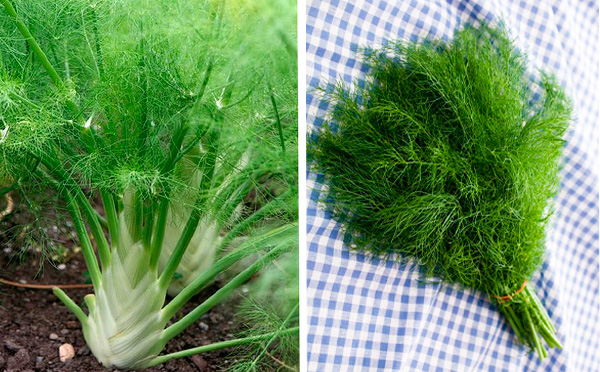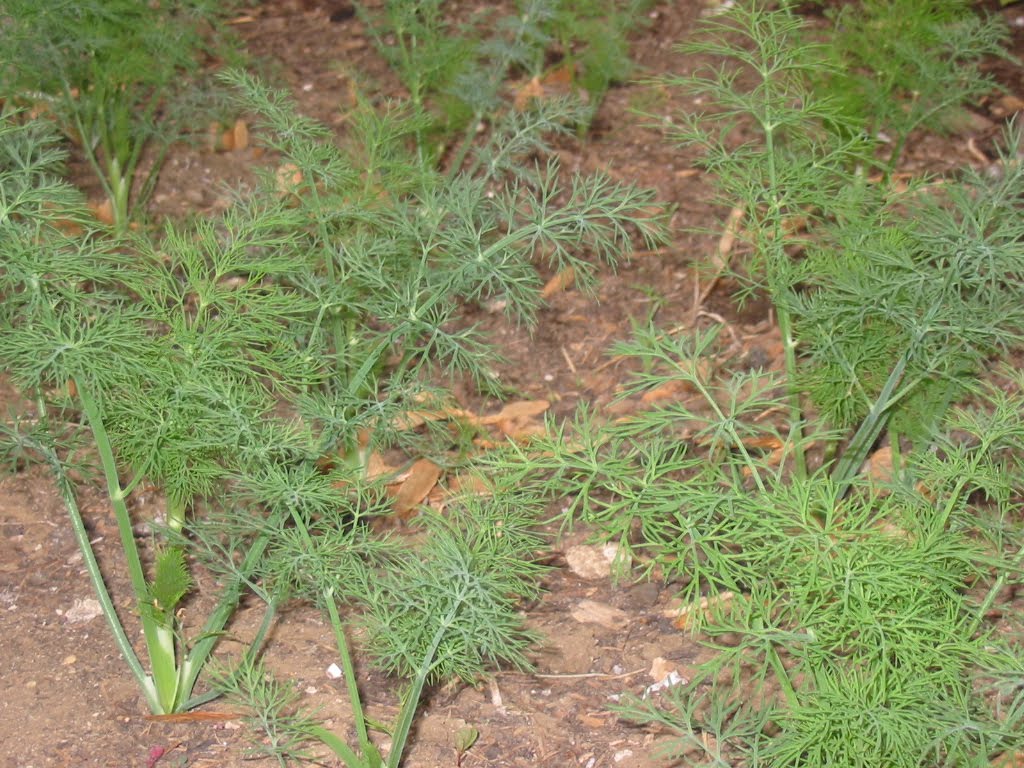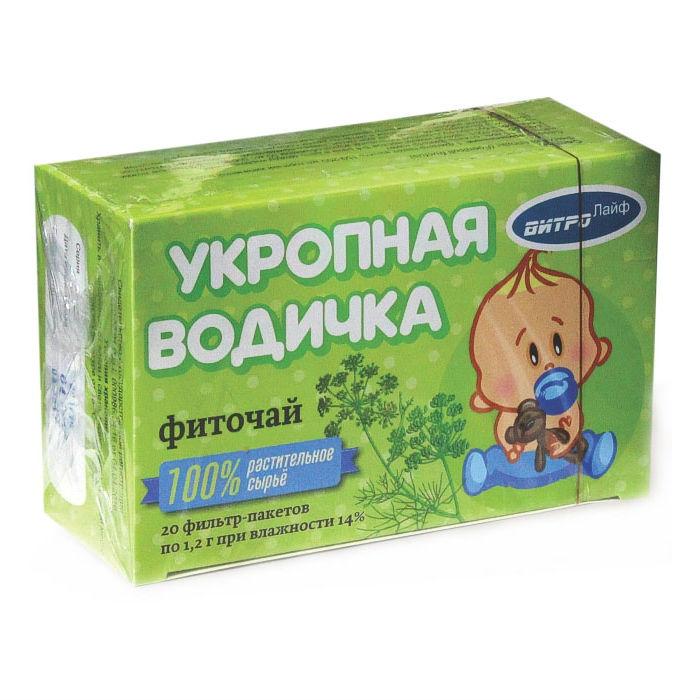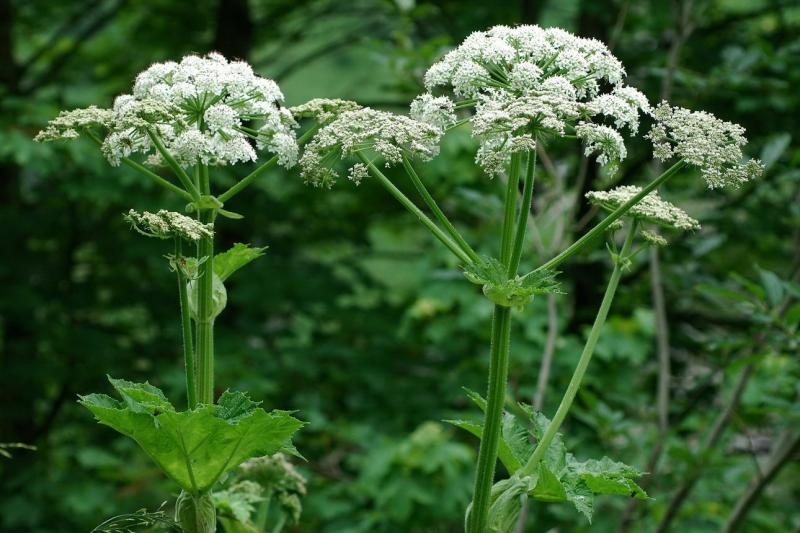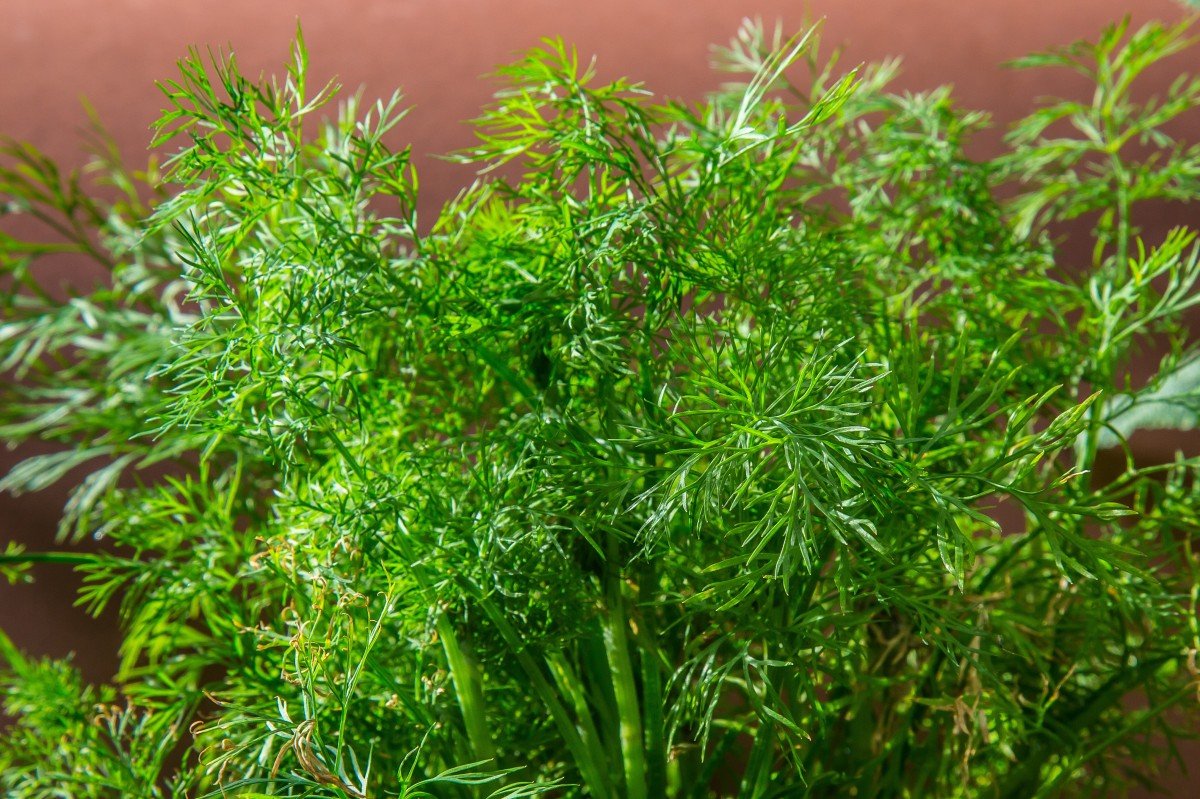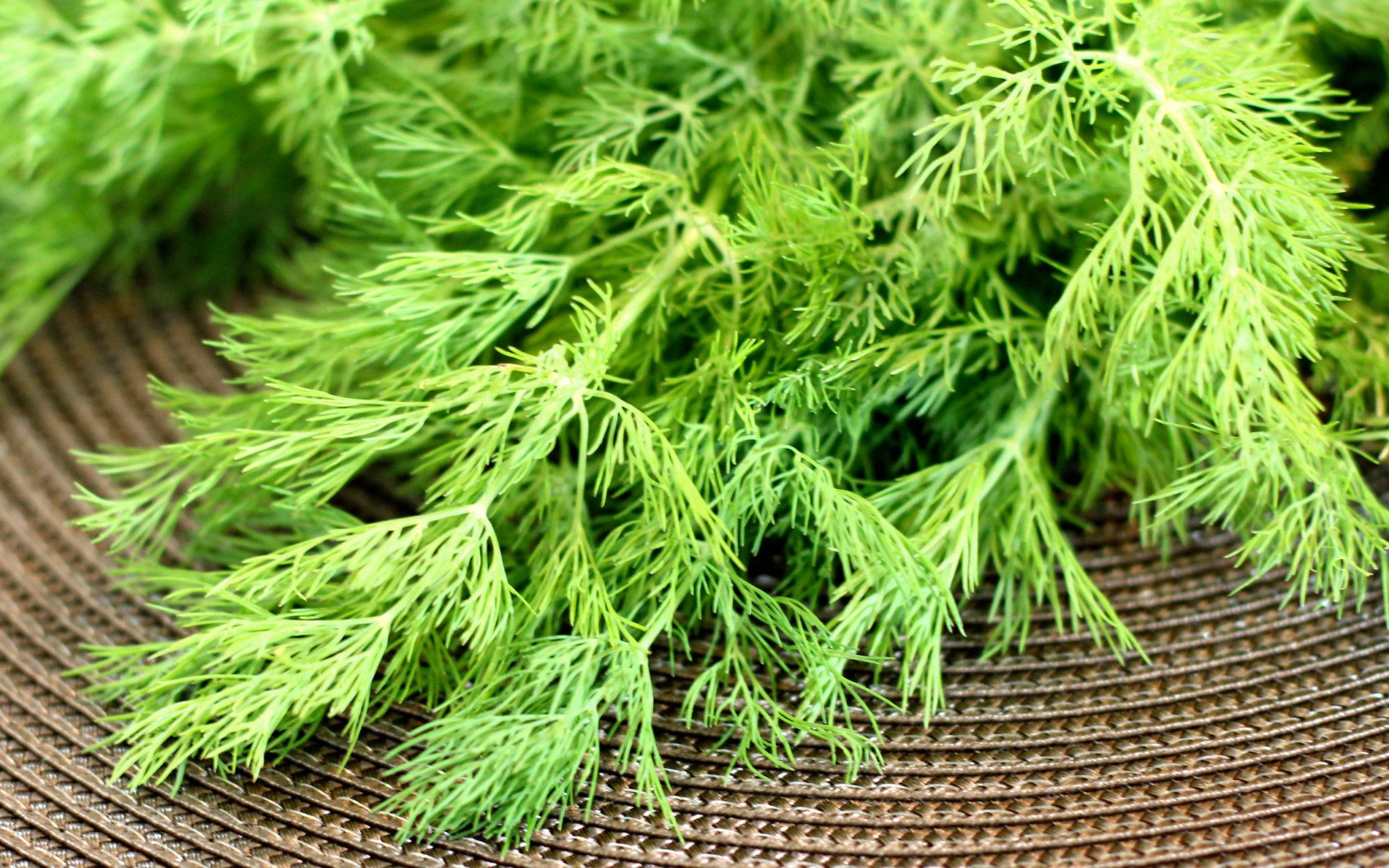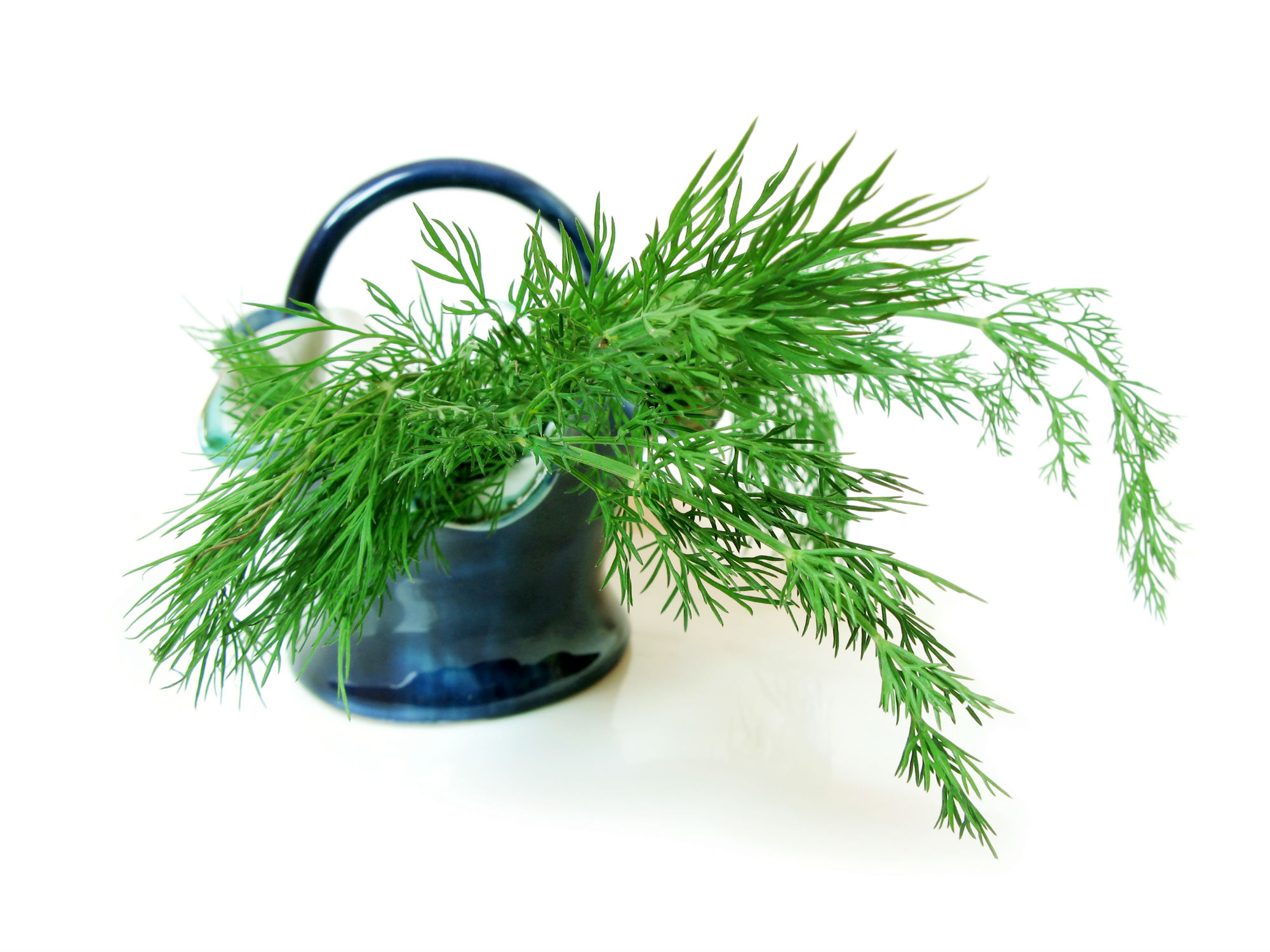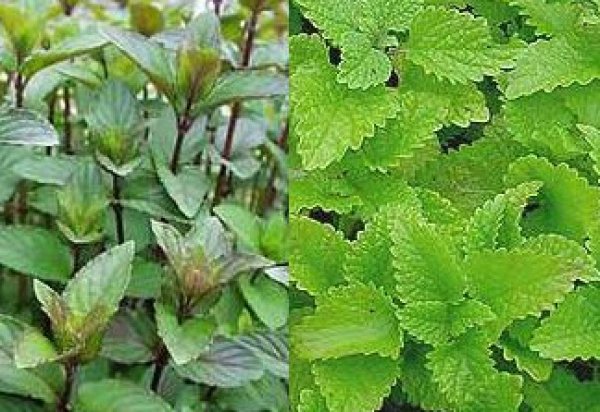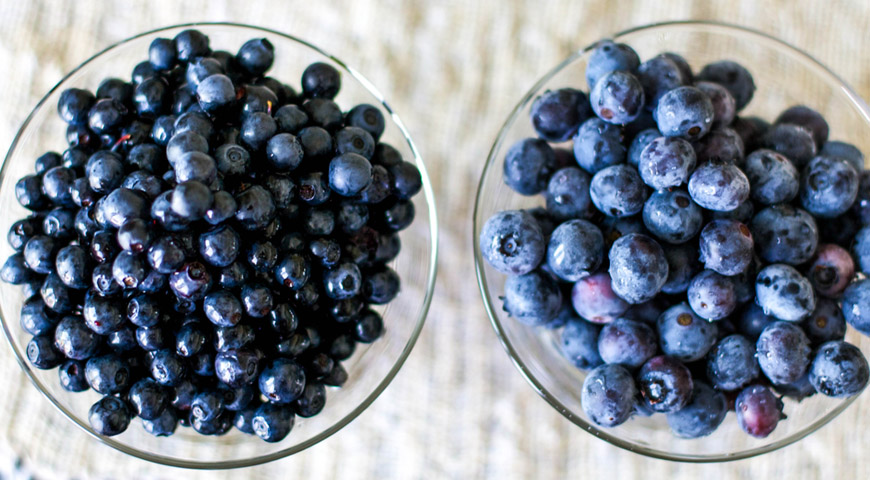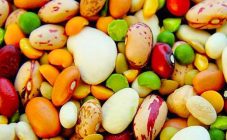Content:
These 2 crops of the Celery umbrella family are confused by novice gardeners. Therefore, it is worth taking a closer look at what fennel and dill are, what is the difference between them, what are the features of each plant. And also learn to distinguish them from poisonous wild-growing individuals.
Fennel
This spicy herb has another name - wild dill, sometimes referred to as sweet dill. But fennel is a culture separate from the vegetable umbrella, represented by two varieties.
What does a plant look like
Fennel has a rather powerful branchy waxed tall (up to 2 m) stem of a cylindrical shape, casting a bluish bloom. Stem leaves, like dill, pinnately dissected into linear narrow lobes. The lower leaves are petiolate, in vegetable fennel they emerge from the head of cabbage.
The yellow five-petalled flowers are collected in umbrellas, which are located on the tops of the stems. Fennel, as well as dill, is bisexual. The plant blooms from July to September. The two-seed fruit is similar to dill.
Value
Both varieties of herbs are used for food. Vegetable heads of cabbage are used in salads, for preparing first and second courses. They are also valued as a dietary product. Ordinary fennel is used as a spice instead of dill.
Each species is valuable for its healing effect:
- spicy vegetable heads are recommended for kidney and liver diseases;
- they will also help with eye problems;
- in folk medicine, ordinary fennel seeds are included in recipes for hypertension and for the treatment of hypochromic anemia;
- advise a nursing mother to enhance lactation and in the case when the newborn suffers from colic;
- fennel is included in herbal preparations that have a carminative and choleretic effect;
- enhances the decoction of the secretory function of the digestive glands;
- the seeds have a calming effect on the nervous system.
The plant is a good antispasmodic and antiemetic agent. The essential aroma is used as a perfume for medicines. Fennel has found its use in perfumery and cosmetology.
Composition
All parts of the herb are valued, but the fruits have the most medicinal properties. They are characterized by a high content of essential oils, the main of which is anethole. There are a lot of sugars in the composition, so fennel is sweeter than dill. In terms of the content of fatty oils, both crops under consideration are similar to each other. As well as the main amount of useful mineral compounds, vitamins, flavonoids, folic acid.
Dill
This spice is a "classic" of garden beds and has been used by mankind for a long time. It is difficult to imagine both a summer cottage and a dining table without dill. This plant is more popular than fennel, but in many ways it is similar.
Description
Outwardly, dill is very similar to a wildly growing "brother". The same tall, branched, erect stem with longitudinal ribbed stripes and waxy bloom. At first glance, the leaves are also similar - sessile or petiolate, divided into lobules.If you don't look too closely at the flowers, then they are also identical - small, five-part, forming umbrellas. It is difficult to distinguish between each other and the seeds - grayish-brown droppings.
Beneficial features
Basically, garden dressing is used as a spice for pickling, preserving and salting vegetables. Essential aroma and flavor enhances the quality of salads and hot dishes. But dill is valued no less than fennel for its healing properties - they have an almost identical useful composition.
Among the essential oils of dill, carvone should be distinguished. Fatty oils are represented by glycerides of linoleic, oleic, petroselinic, palmitic acids. The spice culture attracts with its rich vitamin and mineral set.
Dill water for babies is made from the fruits, it helps to establish intestinal peristalsis. Decoctions and infusions have a calming and antispasmodic effect, expectorant and vasodilator, diuretic and choleretic.
Treat with dill decoctions dyspepsia in children. The composition of dill water is useful for cystitis in adults, relieves flatulence and abdominal pain. Every property inherent in fennel can be attributed to garden dill.
What is the difference between dill and fennel
The two spicy cultures are very similar to each other. But in order to fully understand the issue: fennel is a type of dill or not, it is worth considering the differences between them (and they exist).
Differences between cultures
| Fennel | Dill |
|---|---|
| It develops as a perennial plant, in one place it can grow up to 4 years | Herbaceous annual |
| Fennel grows larger than dill | |
| Leaf lobes are wider than real dill and coarser | Graceful leaves are dissected into narrow, almost needle-like lobes |
| Umbrellas are formed mainly on the tops of the stems | Umbellate inflorescences are also present on the branches |
| Strong smell is closer to aniseed aroma than dill | Native rich spicy aroma |
| Larger fruit | The seed is smaller than that of fennel |
| Essential oils in seeds not less than 6% | Less pronounced fruit aroma due to lower ester content - up to 4% |
| The presence of edible heads of cabbage in the base of vegetable fennel | The stem has no characteristic thickenings |
| Powerful, fusiform root, up to 2 cm thick | The shaft is thin and poorly developed |
| There are slight differences in chemical composition |
Cultures differ between themselves and agricultural technology. In many ways, the growing conditions are identical, but a number of discrepancies can be distinguished.
Distinctive features of agricultural technology
| Fennel | Dill |
|---|---|
| Already growing on the site and is ready to give greens throughout the growing season | To have fresh greens all season, it will have to be sown every year at several times |
| Sown when the spring frosts are gone | Can be sown as soon as the snow melts |
| A lot of space is needed for each plant - up to 20 cm after thinning, due to powerful heads of cabbage, therefore it needs separate beds | When growing, they leave no more than 3 cm between plants.Can be planted between other crops |
| Requires constant care | Unpretentious plant |
| When the stems of the vegetable species begin to thicken, the plant must be spud | Does not need hilling |
| The crop is harvested when the heads of cabbage ripen (when they become the size of an apple). These thickenings are cut at the root | Green twigs go for food, for conservation and for spices - umbrellas after flowering |
| In the southern regions, it requires mulch cover for the winter - they leave 5-6 cm of the stem above the ground. In the northern regions, it is recommended to dig with an earthen lump and hold it in greenhouses until spring | As an annual, it does not need such an event. At the end of the growing season, it is simply removed from the site |
Knowing all these features, now it will be easy to distinguish fennel from dill. But when preparing a pharmaceutical plant, it is advisable not to confuse it with other wild plants.
From a distance, the flowering plant really looks like fennel - the same yellow umbrella-baskets. But, looking closer, they notice that the inflorescences are flatter and have an irregular shape, and the leaves of the hogweed are whole and wider. The bush itself reaches a considerable size, the stem is hard and heavily pubescent.
The plant is not just poisonous - severe burns are formed on the body from contact with it. To avoid such a nuisance, you need to know the hogweed "by sight". Therefore, it is worth carefully studying the photo of this umbrella, so as not to confuse pharmacy fennel with it.
Considering how one member of the Celery family can differ from another, you understand how diverse the natural world is (even with the maximum external similarity). Dill and fennel are similar not only in their appearance, but also in useful properties. Although there are distinctive nuances here, determined by the chemical composition of each of the plants.
